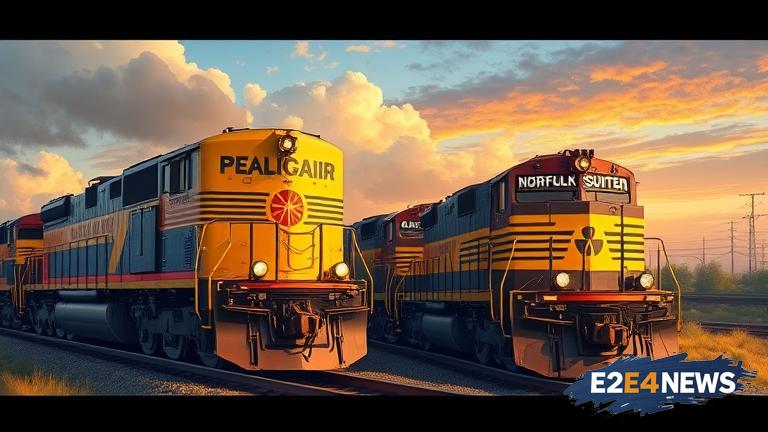In a move that could significantly alter the landscape of the railroad industry, Union Pacific and Norfolk Southern have confirmed that they are engaged in merger talks. This potential union would bring together two of the largest railroads in the United States, creating a behemoth with unparalleled reach and capabilities. The merger discussions, which have been ongoing for several months, aim to capitalize on the strengths of both companies, enhancing their competitive edge in the market. Union Pacific, known for its extensive network across the western United States, and Norfolk Southern, with its strong presence in the eastern part of the country, would together form a railroad that spans the entire continent. This merger would not only increase efficiency by reducing redundant operations but also provide a more streamlined service to customers. The combined entity would have a broader reach, allowing it to compete more effectively with other major railroads, such as BNSF Railway and CSX Transportation. The potential merger has sparked interest among investors and industry analysts, who see it as a strategic move to consolidate resources and improve profitability. However, the path to a successful merger is not without its challenges, including regulatory hurdles and the need for approval from shareholders. The Surface Transportation Board (STB), the primary regulatory body overseeing railroads, would need to approve the merger, ensuring that it does not harm competition or public interests. Despite these challenges, both companies are optimistic about the potential benefits, citing improved service, increased efficiency, and better positioning in the global market. The merger talks also highlight the evolving nature of the railroad industry, which is facing increased competition from trucking and intermodal services. As the industry continues to consolidate, mergers like this could become more common, leading to a more streamlined and efficient rail network. The potential impact on employment and local communities is also a consideration, as mergers often lead to restructuring and potential job losses. Nonetheless, the prospect of a stronger, more resilient railroad industry could have long-term benefits for the economy and trade. The merger, if successful, would be one of the largest in the history of the railroad industry, marking a significant shift in how goods are transported across North America. As discussions progress, all eyes will be on the regulatory approvals and the final terms of the merger, which could pave the way for a new era in rail transportation. The companies involved are working diligently to address all concerns and ensure a smooth transition, should the merger proceed. This development is being closely watched by industry insiders, investors, and the general public, given its potential to reshape the railroad landscape and impact the broader economy.




